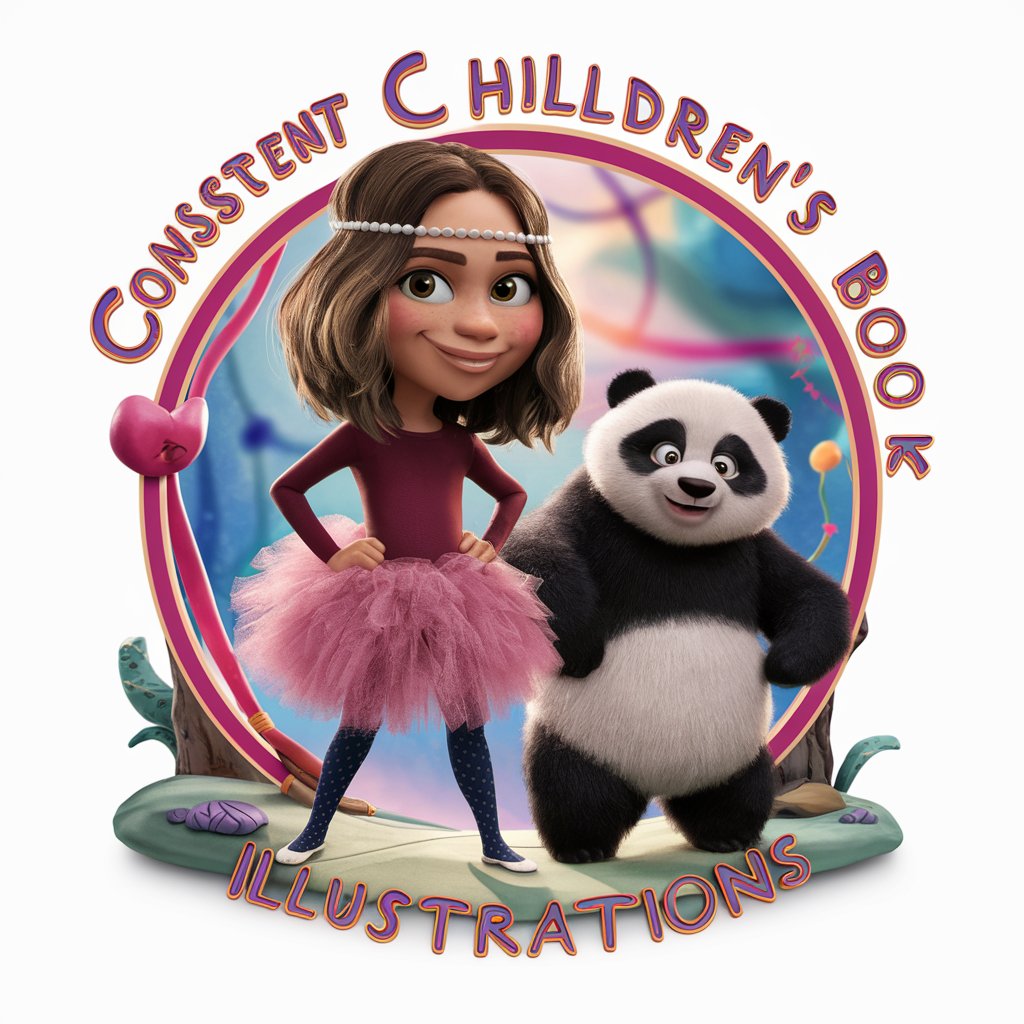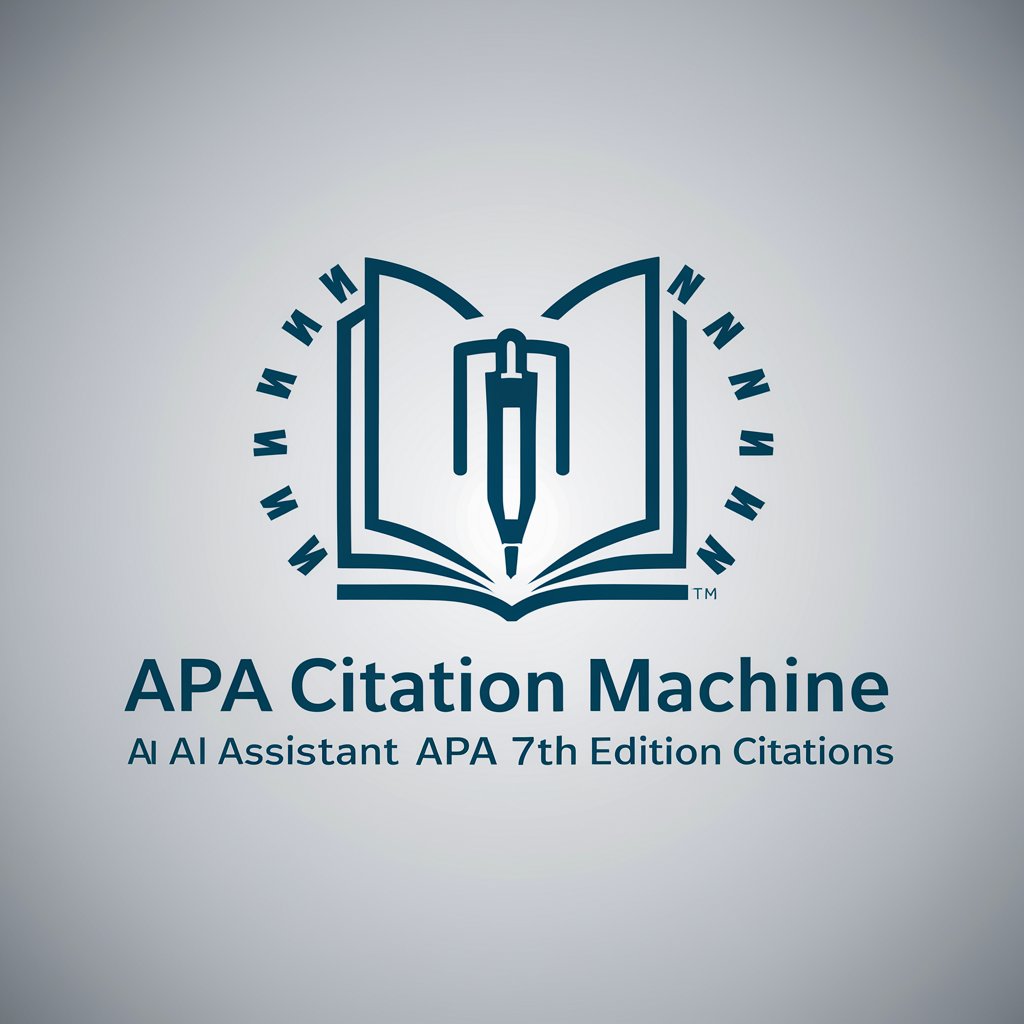
APA references - APA Citation Generator

Hello! I'm here to assist you with APA references and citations.
Streamline Your Citations with AI
Can you help me format this reference in APA style:
What's the correct APA citation for a book with multiple authors?
How do I cite a website in APA format?
Can you show me an example of an APA reference list?
Get Embed Code
Introduction to APA References
APA references are a crucial component of academic writing, providing a standardized format for citing and referencing sources. The APA (American Psychological Association) citation style is widely used in the social sciences, education, and other fields. Its primary function is to ensure clarity, consistency, and credibility in academic communication. APA references follow a specific format, including author names, publication dates, titles, and other details, allowing readers to locate and verify the sources cited in a paper. For example, in-text citations (e.g., Smith, 2019) and reference list entries (e.g., Smith, J. (2019). Title of the article. Journal Name, volume(issue), page range) adhere to APA guidelines, facilitating proper attribution of ideas and research findings. Powered by ChatGPT-4o。

Main Functions of APA References
Citing Sources
Example
In-text citations such as (Smith, 2019) or (Johnson & Lee, 2020) are used to acknowledge the work of other authors within the body of a paper.
Scenario
When writing a research paper, authors include in-text citations to credit the ideas, theories, and findings of other scholars, thus avoiding plagiarism and providing evidence for their arguments.
Creating Reference Lists
Example
Reference list entries provide detailed information about each cited source, including authors, publication dates, titles, and source locations.
Scenario
At the end of an academic paper, authors compile a reference list containing all the sources cited in the text. This list allows readers to locate and verify the accuracy of the sources used in the research.
Ensuring Accuracy and Consistency
Example
APA style guidelines offer specific rules for formatting citations and references, ensuring accuracy and consistency across academic papers.
Scenario
Authors adhere to APA guidelines to maintain consistency in formatting and citation style, thereby enhancing the credibility and professionalism of their academic writing.
Facilitating Retrieval of Sources
Example
Complete reference entries enable readers to easily locate and retrieve the sources referenced in a paper, aiding further exploration and verification of the cited information.
Scenario
Researchers, students, and scholars rely on APA references to access the sources cited in academic papers, facilitating deeper engagement with the literature and supporting the advancement of knowledge.
Ideal Users of APA References Services
Academic Researchers
Academic researchers across various disciplines, including psychology, sociology, education, and business, benefit from APA references services. These researchers rely on APA style guidelines to accurately cite and reference sources in their scholarly work, ensuring adherence to academic integrity standards and facilitating the dissemination of knowledge.
Students
Students at all levels of education, from high school to graduate school, utilize APA references to properly cite sources in their assignments, research papers, and theses. APA style provides students with a standardized framework for attributing ideas and information, teaching them essential skills in academic writing and research integrity.
Academic Editors and Publishers
Academic editors and publishers play a critical role in ensuring the quality and credibility of scholarly publications. By adhering to APA style guidelines, editors and publishers maintain consistency and accuracy in citation and referencing, thereby upholding the standards of academic publishing and facilitating the peer review process.

How to Use APA References
Get Started
Visit yeschat.ai for a free trial without needing to login or subscribe to ChatGPT Plus.
Identify Sources
Collect all necessary information about your sources including author(s), publication year, title, and where it was published.
Format Correctly
Follow the APA style guide to correctly format the references, including order, punctuation, and capitalization.
Cite In-text
Use parenthetical or narrative in-text citations throughout your document to match the full references in your reference list.
Review Consistency
Ensure consistency in your citation style throughout the document, and verify all citations against the original sources for accuracy.
Try other advanced and practical GPTs
Concept map
Empower your ideas with AI-driven concept mapping.

Social Media Marketing Plan
Empowering Your Social Strategy with AI

Hello P news summaries
Streamline news consumption with AI summaries.

GURU ONE
Empowering Decisions with AI

Business Advisor
Empowering Businesses with AI Insights

Cold Email Bot
AI-powered Cold Email Personalization

Shorten Text
Automatically shorten texts with AI precision.

Question Generator and Answerer
Unleash AI-powered knowledge retrieval.

Human Resources expert
Revolutionizing HR with AI

Consistent Children's Book Illustrations
Illustrate your stories with AI-powered precision.

Software System Architecture
Crafting Software Architectures with AI

Write A Book - One Click
Empowering Authors with AI

Common Questions About APA References
What is the basic format for an APA reference list entry?
A typical APA reference list entry includes the author's last name, initials, publication year, title of the work, and publication details. The specifics can vary depending on the source type.
How should I cite a book with multiple authors in APA style?
List up to 20 authors by their last names followed by initials, separated by commas, and an ampersand (&) before the last author. If more than 20 authors, list the first 19, add an ellipsis (...), then the last author's name.
Can I use et al. in APA in-text citations?
Yes, for a work with three or more authors, list the first author's last name followed by 'et al.' and the publication year in every citation.
How do I cite a website in APA format?
Include the author if available, publication date, title of the page, and URL. If no author, start with the title. If no date, use (n.d.) for 'no date'.
What’s the difference between a bibliography and a reference list in APA style?
A reference list includes only sources that are cited in the text of the paper. A bibliography can include background readings or relevant texts that were consulted but not cited in the text.





